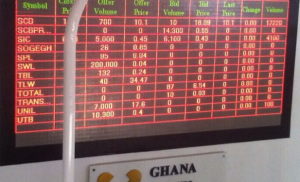Congestion at the berth-side of the new MPS Terminal 3 at Tema Port has caused vessels to be ‘locked up’ at anchorage, a situation that poses huge losses to shipping agents and vessel owners, the B&FT has gathered.
According to sources, vessels’ turnaround time – which is the duration a vessel takes to berth, discharge/upload cargo and turn back to sea for other vessels at anchorage to berth – has shot up from a three-day average to between 9-to-10 days.
A vessel named MV Spyros on voyage WAS25N19, which docked at anchorage on July 23, was only able to berth on August 2, 2019 – nine days clear.
CMA CGM LAPIS, another vessel on voyage WAS26N19 and which got to anchorage on July 25, was given an expected berth-date of August 4, 2019. This represents a 10-day waiting period, which is far more than the 3-day maximum waiting period that existed at Terminal 2 of the Tema Port.
Shipping lines say they are worried about the situation, as it is having dire financial consequences on their operations.
They have also questioned why MPS vacated Terminal 2 in a rush, knowing very well that there would be teething problems at the new facility.
A vessel with 30,000 GRT pays US$20,000 per day at anchorage – this means for such a vessel to be held for nine days, the vessel owner will have to cough up about US$180,000 in addition to berthing cost.
“These costs are waste, since they are out of pocket and could have been saved. I can’t charge the client or the consignee or even the merchant. We are engaging with the port authorities on the issue, but it’s more of a lost battle because there is no communication coming from their end,” an aggrieved vessel owner told the B&FT in an interview.
He added that: “This is the cost that we are building up at the port. What this means is that in the next freight cycle, the freight cost will have to go up and the ultimate loser will be the consumer”.
Aside from cost implications, the source said the delays at anchorage will have some spillover effects at the next point of call for the vessels, including delays in the delivery of consignments.
“Hitherto, we were spending an average of 36 hours at Terminal 2, but now it is getting to about 96 hours for the same volumes at Terminal 3 – and that is even when the vessel is in port under operations.”
He added: “We were expecting these teething challenges, but it is going beyond that. I have a berthing window in Abidjan that exports more reefer containers; so if my vessel sits at anchorage for nine days, I have lost that window”.
The Shipowners and Agents Association of Ghana (SOAAG), reacting to the concerns of its members, has attributed the current situation to poor coordination and cooperation among key port stakeholders.
“I don’t think the parties are playing their cards well; both GPHA and MPS. It will take about three months before this can settle, and it is not the best for the industry at the moment.
“We all knew that there were going to be some teething challenges, but if all the parties were brought together to discusses these operational issues, some of these things could have been tallied down,” said Adam Imoro Ayarna, Vice President of SOAAG.
He was particularly worried about the fact that the shipping business is close to its peak season, as the situation could worsen if appropriate measures are not put in place to tackle the teething challenges at the new terminal.
“Three months from now we’ll be heading into the peak seaso, so you can imagine the challenges it will bring to the shipping business,” he noted.
Source: Thebftonline.com




